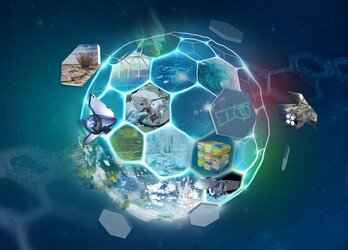m-NLP begins measurements as first experiment onboard Bartolomeo
Late at night on Sunday 17th September 2023 the multi-Needle Langmuir Probe (m-NLP) was successfully transferred to the Bartolomeo platform, marking the first experiment to use one of the 11 slots available on the service.

Over 8 slow hours Robotics Ground Controllers manouvered the Multi-Needle Langmuir Probe, a payload made in Norway to sample the in-situ space weather environment to an extraordinarily fine level of detail, into place. The first m-NLP measurements have already begun and data on the density of charged particles around Earth is being collected, thanks to its six probes taking measurements down to a one metre-scale and up to 5000 times a second – a precision never achieved before.

The International Space Station has hosted around 370 European experiments over the last two decades. However, the demand for experiment slots far outstrips supply. Bartolomeo, mounted on the forward side of the Colombus laboratory, aims to bridge some of this gap by providing quick access to space, a high-speed data feed and a versatile design – meaning many different payloads or experiments can be accommodated.
Bartolomeo is one of four commercial platforms that provides opportunities for new technologies and experiments to be tested in space by flying onboard the International Space Station. GSTP Element 3 provides support to companies, academia and others interested in using these platforms.

The m-NLP mechanical and electrical interface were developed in the GSTP, while the instruments and the system environmental testing were covered by PRODEX ( PROgramme de Développement d'Expériences scientifiques); the cooperation between science and technologies has proven to be highly effective. ESA experts and facilities have discretely and effectively contributed to this success.















 Germany
Germany
 Austria
Austria
 Belgium
Belgium
 Denmark
Denmark
 Spain
Spain
 Estonia
Estonia
 Finland
Finland
 France
France
 Greece
Greece
 Hungary
Hungary
 Ireland
Ireland
 Italy
Italy
 Luxembourg
Luxembourg
 Norway
Norway
 The Netherlands
The Netherlands
 Poland
Poland
 Portugal
Portugal
 Czechia
Czechia
 Romania
Romania
 United Kingdom
United Kingdom
 Slovenia
Slovenia
 Sweden
Sweden
 Switzerland
Switzerland

























